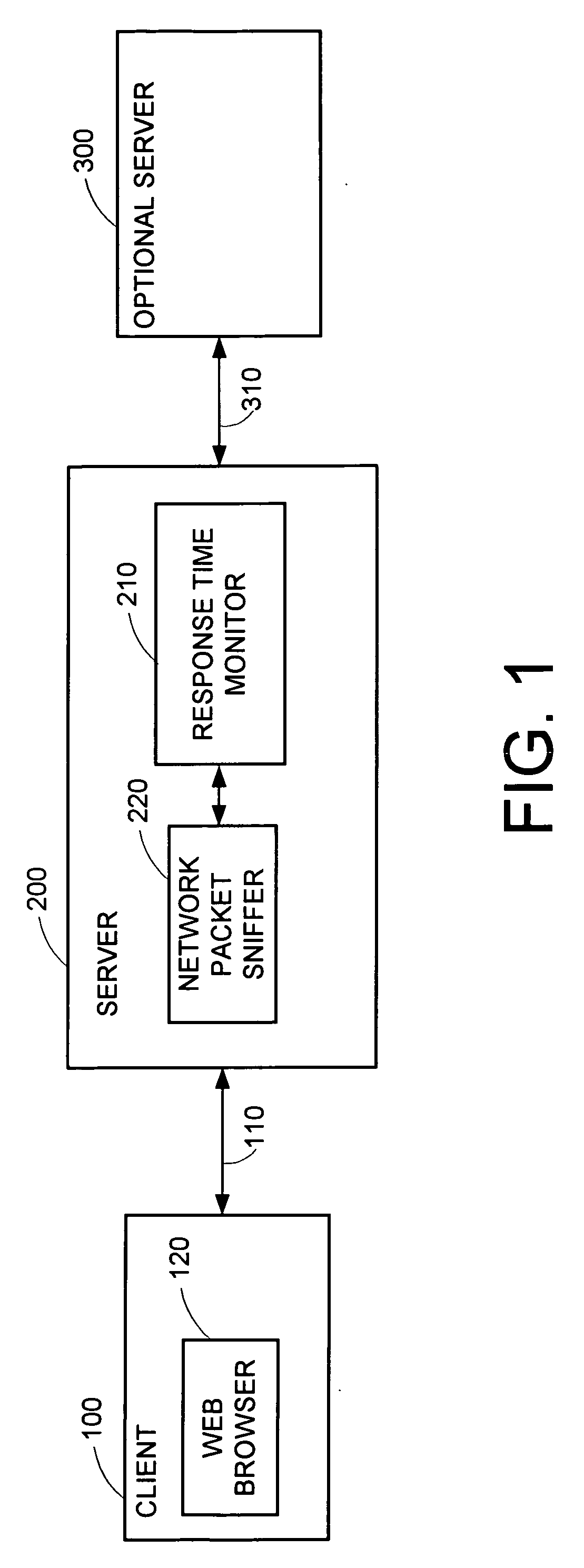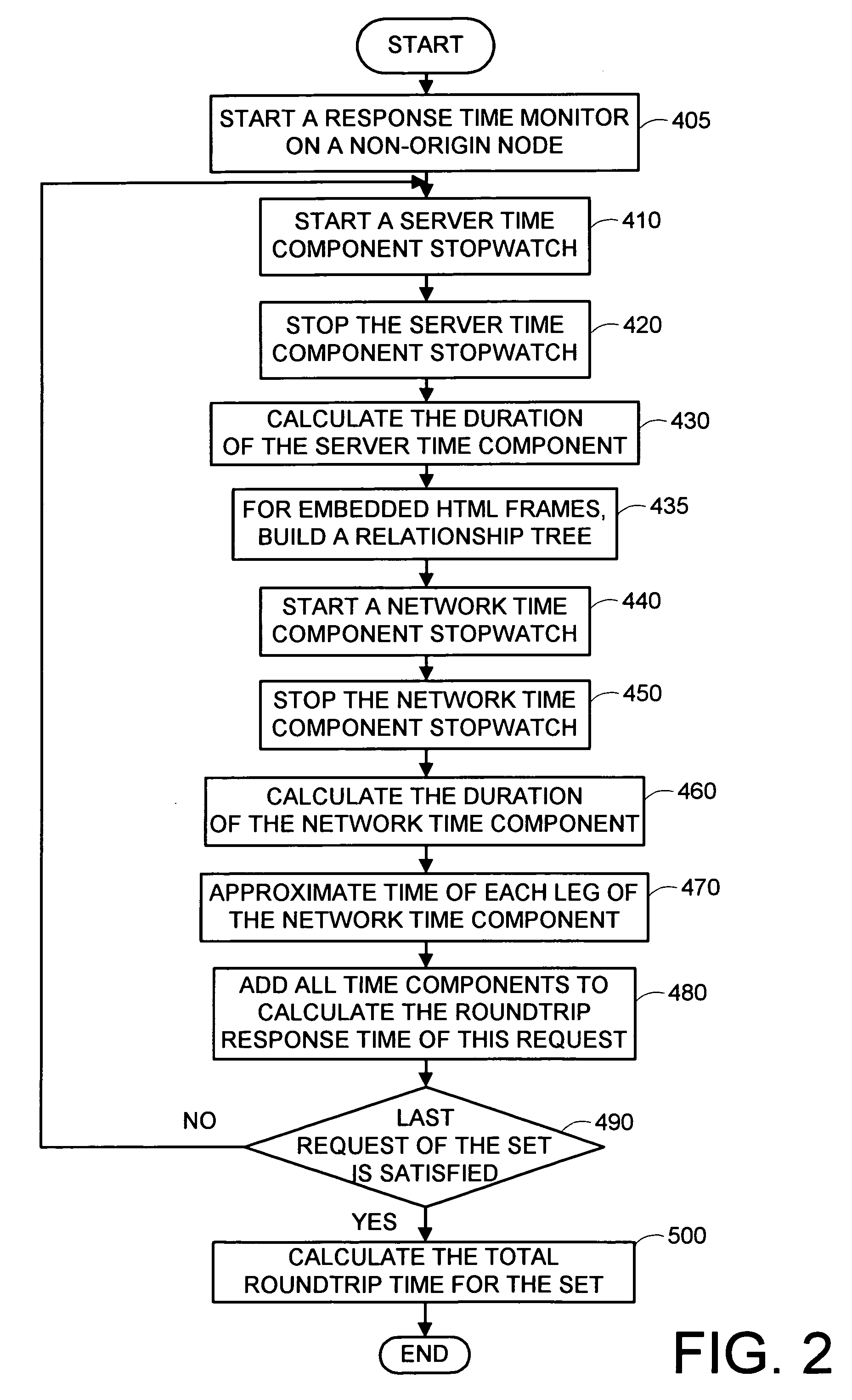System and method utilizing a single agent on a non-origin node for measuring the roundtrip response time of web pages with embedded HTML frames over a public or private network
a technology of roundtrip response time and non-origin node, applied in the field of computer networks, can solve the problems of missing the calculation of this time component from nearly every commercial response time measurement available to customers today, requiring software installation, and typically not being in direct control of the computer
- Summary
- Abstract
- Description
- Claims
- Application Information
AI Technical Summary
Benefits of technology
Problems solved by technology
Method used
Image
Examples
Embodiment Construction
[0023] In the following description of the preferred embodiments reference is made to the accompanying drawings, which form the part thereof, and in which are shown, by way of illustration, specific embodiments in which the invention may be practiced. It is to be understood that other embodiments may be utilized and structural and functional changes may be made without departing from the scope of the present invention.
[0024] The main goal of the present invention is to provide a simple, improved, generic and highly efficient response time monitor in a public or private network that aggregates time of a set of generated requests and responses that result from an original request for a web page with embedded HTML frames and that can measure the true roundtrip response time and its components from a single, non-origin measurement point, which is the destination node and not the customer's origin node. The present invention is preferably used in networks using Hypertext Transfer Protoc...
PUM
 Login to View More
Login to View More Abstract
Description
Claims
Application Information
 Login to View More
Login to View More - R&D
- Intellectual Property
- Life Sciences
- Materials
- Tech Scout
- Unparalleled Data Quality
- Higher Quality Content
- 60% Fewer Hallucinations
Browse by: Latest US Patents, China's latest patents, Technical Efficacy Thesaurus, Application Domain, Technology Topic, Popular Technical Reports.
© 2025 PatSnap. All rights reserved.Legal|Privacy policy|Modern Slavery Act Transparency Statement|Sitemap|About US| Contact US: help@patsnap.com



